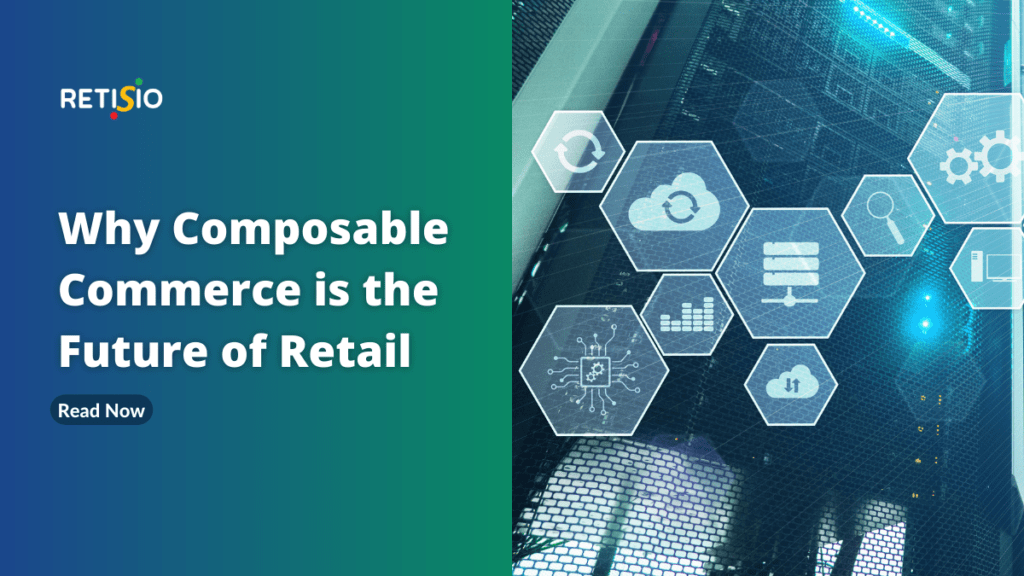The term “composable commerce” was first popularized by Gartner in 2019, which deemed it a critical capability for digital commerce platform providers. Described as an evolutionary leap for retail and fashion brands, composable commerce enables merchandisers to offer more personalized experiences at scale across all their digital channels. Composable commerce may ultimately transform how the retail industry operates.
The term composable commerce is also often used to refer to the use of “modules” in digital commerce experiences. The notion of composable commerce was first put into use by Amazon, which launched its personalized buying tool, “inspect and buy,” in 2015. In recent years, major tech companies including Facebook and Google have been exploring ways of offering their services in modular form.
Composable commerce is a customer-centric strategy that enables a digital consumption roadmap for not only retailers and brands. It helps retailers and brands create a personalized experience for their customers by providing content that is relevant to them, their specific needs, and their unique wants. With a composable commerce strategy, brands can begin to understand what their consumers want and create content for them.
Benefits of a composable experience to customers
A customer’s composable experience is comprised of the different touch points he or she has with a business. This is where a composable e-commerce platform comes in. It helps businesses create a frictionless and consistent customer experience across all channels.
The benefits of a composable e-commerce platform are threefold: it improves the customer’s journey, it saves businesses money, and it helps businesses sell more online.
A composable e-commerce platform can use artificial intelligence (AI) and machine learning (ML) to gain meaningful insights into customer data, assisting in planning unified digital interactions and optimizing customer experiences across the board. The software analyzes data across different touchpoints, including social media and other sources, to create a cohesive customer experience. This allows businesses to better understand customers’ interests and behaviors, then craft relevant products that they want to buy.
The future of digital experiences with composable commerce
The future of digital experiences is not just about being able to order a product online and have it delivered to your door. It’s about being able to choose the product you want, customize it, and then have it delivered in a way that’s most convenient for you. This is the idea behind “composable commerce,” which allows customers to put together their own orders with products from different brands and retailers, without having to buy them all from one company.
One example of this idea in action is the company Gooten, which sells customizable shirts made out of bamboo fabric. Customers can choose the type of fabric they want (cotton or bamboo), add a design on top, choose what size they want, and then customize other details like sleeve length or collar style. The company prints the shirt and ships it to the customer. Gooten makes money by charging customers a fee for printing the shirt.
The future of digital experiences is not just about being able to order a product online and have it delivered to your door. It’s about the ability to order it in countless ways, with countless different combinations. Think of composable commerce as a new way for customers to interact with brands and retailers. It’s about giving them the power to create their own unique product experience by mixing and matching products from various brands or retailers in one place.
Composable commerce is not just about the customer’s ability to create their own personalized product experience, but also the retailer’s ability to offer more options than ever.
Leveraging the power of machine learning and personalization and recommendation software to recommend items for customers based on past orders, this type of composable commerce is only going to grow in the future. The rise of machine learning and AI has enabled retailers to use these technologies to provide a personalized shopping experience. .For retailers, the use of big data is becoming an integral part of their strategy and strategy efforts are moving to incorporate machine learning. This is because these technologies can identify patterns in data to help optimize the performance of marketing programs.
Composable commerce can further improve these strategies by integrating the customer experience with data to enable the use of predictive e-commerce analytics. This can incorporate additional services such as content curation, enabling better user experiences in the interactions with customer service or retailers. For consumers, big data helps them get access to the relevant information they need while shopping. It can include an overview of what is trending in the market, what their interests and preferences are, or even which products they might want to buy.
Learn more about RETISIO Commerce, the frictionless, composable e-commerce platform.



